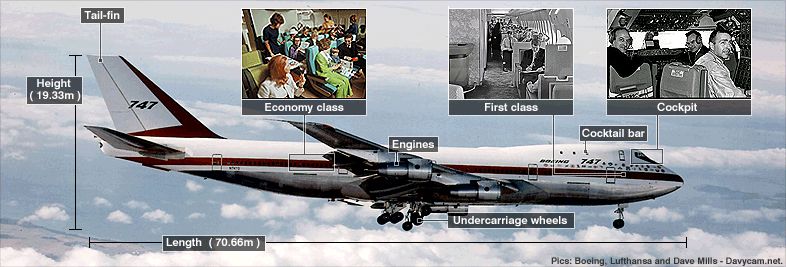Four decades of a flying giant
The very first time I flew in a B747 was sometime in 1970. Air India for whom I was working for invited me to sample this enormous aircraft compared to the B707, that regularly serviced the Bombay –Mauritius run.
I flew from Bombay to Delhi on the inaugural flight.
The original Boeing 747 was so big that airports had to be adapted to accommodate it. Hangars were enlarged to fit the tail-fin, while tow-trucks and stairs on the taxiway had to be changed. The turbofan engines were more powerful and quieter than jet engines. There were 16 wheels – twice the normal – to spread the weight.
Passengers in economy class had a greater sense of space because there were twin aisles and higher storage cabins. Travellers in first class had access to a cocktail bar up a spiral staircase. Pilots (two plus a flight engineer) had to be retrained in new simulators because the cockpit was so high off the ground.
Four decades ago, Boeing’s prototype 747 took to the skies over Washington State for a flight lasting some 75 minutes.
The aircraft, named City of Everett after the location of the factory where it was manufactured, handled well. And so was born the aircraft which has become an icon of the aviation industry and helped bring cheap airline travel to millions of people.
What then made the 747 unique was that it was the first “wide body” aircraft – it had more than one aisle. Today this is the norm for most long haul (and some short haul) aircraft. But at the time it was a big step towards reducing any sense of travelling in a narrow tube, and inducing a sense more equivalent to flying in a large room with high ceilings.
Also new was the upper deck, accessed by a spiral staircase. When the aircraft entered service this was initially a rather exclusive bar for first class passengers – today it is more typically used as an additional business or economy class seating area.
Air Mauritius for a number of years flew the SP versions of the B747 which were on lease from South African Airways which had autonomy of 14 hours of flying. One of the key factors for the sucess of Mauritius as a preferred sunshine holiday for Europeans was the non stop service offered as early as the 70’s by Air Mauritius on a SP B747.

3 comments ↓
wow, part of this entry has been plagiarized straight from BBC newz! 😛
True part of the posting comes from BBC and from Boeing. I forgot to mention that on the blog. Besides the lettering is different, I usually quote my sources whenever appropriate.
Part of the current Air Mauritius and Mauritian Tourism problems is the fact that it has remained frozen in the 70s and 80s. Everything and everybody else has changed and moved on!
Leave a Comment